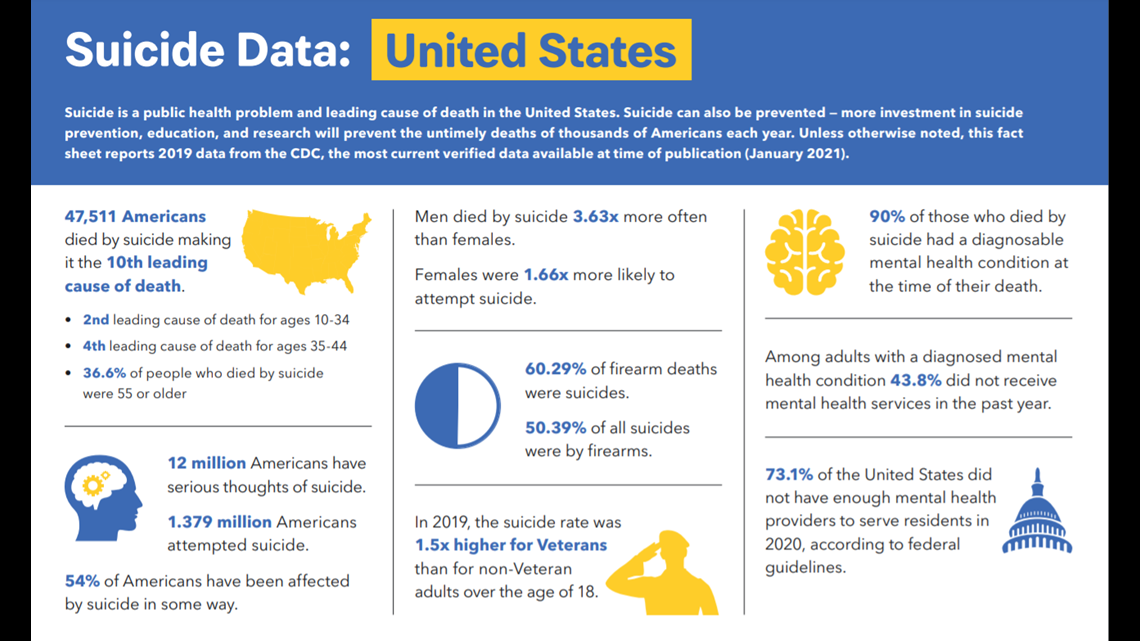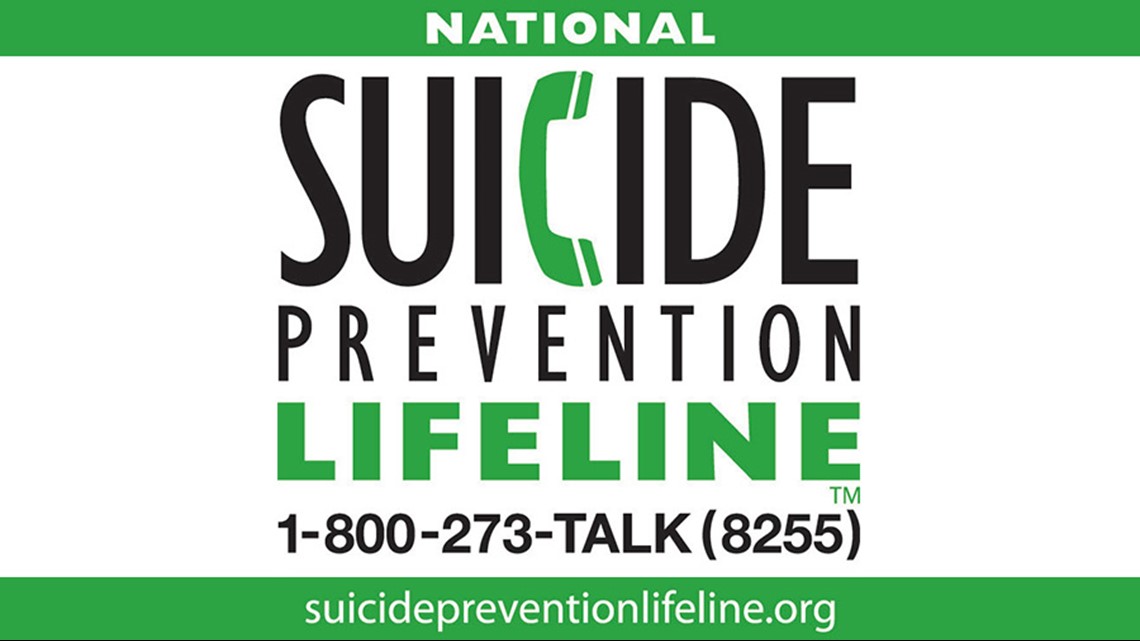COLUMBIA, S.C. — A bill, proposed back in January, is making it's way to the governor's desk.
The legislation requires all South Carolina middle, high schools, and all colleges to print the National Suicide Prevention Hotline number on their student's identification cards.
"We are thrilled about our legislators getting this through and maybe becoming law here soon," said John Tjaarda, the area director of the SC Chapter of the American Foundation of Suicide Prevention (AFSP).
Last week, the Senate and House unanimously voted to pass the legislation.
The legislation would also require schools to print contact information for a second crisis hotline of its choice, like dating abuse prevention.
"We have 852 suicides in 2019, and that's 852 too many," Tjaarda said. "Suicide is a preventable mental health condition and we're here to help try and prevent it. Just having access to that number, having access to those crisis lines can help people get through those.”
According to the AFSP, suicide is the 10th leading cause of death in the county. Compared to other states, South Carolina is ranked 24th for most cases.


Tjaarda told News 19, suicide as the third leading cause of death for ages 10-24 in South Carolina.
Megan Zappitelli is a child and adolescent Psychiatrist at Prisma Health. She said this legislation could make people more likely to use the Suicide Prevention Hotline number in crisis situations.
She also said this could make people feel more comfortable reaching out since the number is readily available to them without having to research or ask someone for it.
"Anything that can be done to decrease the steps that it takes to get help so I no longer have to look up the number, I no longer have to ask someone for the number, I have easy access to it," Zappitelli said. "My hope would be that people will be more likely to use it, and more likely to share it."
Zappotelli said there has been a stigma asking people if they are having suicidal thoughts. She said it can be hard to ask if someone is suicidal, but it shows support and does not increase the risk for contemplating and attempting suicide.
"In fact, it lowers their risk for attempting suicide if you ask how they're feeling," Zappitelli said. "I think, especially for parents and teachers and other community members, if I asked you the question of, 'are you feeling suicidal,' I'm also demonstrating, 'hey, I can handle it and these topics are okay and they're safe to talk about.'”
Suicide Risk Factors: Risk factors are characteristics or conditions that increase the chance that a person may try to take their life.
1) Health:
- Mental health conditions
- Depression
- Substance use problems
- Bipolar disorder
- Schizophrenia
- Personality traits of aggression, mood changes and poor relationships
- Conduct disorder
- Anxiety disorders
- Serious physical health conditions including pain
- Traumatic brain injury
2) Environment:
- Access to lethal means including firearms and drugs
- Prolonged stress, such as harassment, bullying, relationship problems or unemployment
- Stressful life events, like rejection, divorce, financial crisis, other life transitions or loss
- Exposure to another person’s suicide, or to graphic or sensationalized accounts of suicide
3) Historical:
- Previous suicide attempts
- Family history of suicide
- Childhood abuse, neglect or trauma
Suicide Warning Signs: Something to look out for when concerned that a person may be suicidal is a change in behavior or the presence of entirely new behaviors. This is of sharpest concern if the new or changed behavior is related to a painful event, loss, or change. Most people who take their lives exhibit one or more warning signs, either through what they say or what they do.
1) Talk
If a person talks about:
- Killing themselves
- Feeling hopeless
- Having no reason to live
- Being a burden to others
- Feeling trapped
- Unbearable pain
2) Behavior:
Behaviors that may signal risk, especially if related to a painful event, loss or change:
- Increased use of alcohol or drugs
- Looking for a way to end their lives, such as searching online for methods
- Withdrawing from activities
- Isolating from family and friends
- Sleeping too much or too little
- Visiting or calling people to say goodbye
- Giving away prized possessions
- Aggression
- Fatigue
3) Mood:
People who are considering suicide often display one or more of the following moods:
- Depression
- Anxiety
- Loss of interest
- Irritability
- Humiliation/Shame
- Agitation/Anger
- Relief/Sudden Improvement


If the governor signs the bill into law, the requirement will state July 2022.

